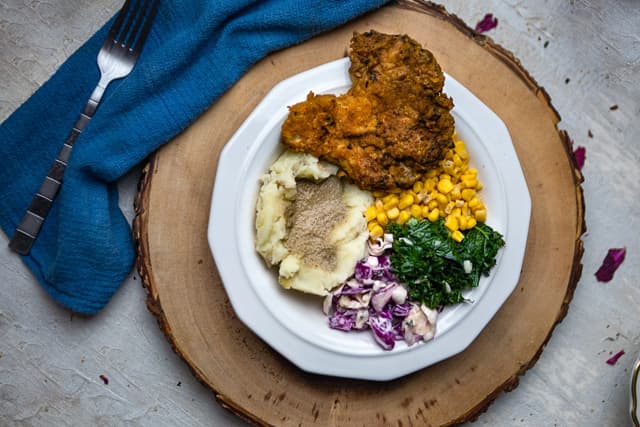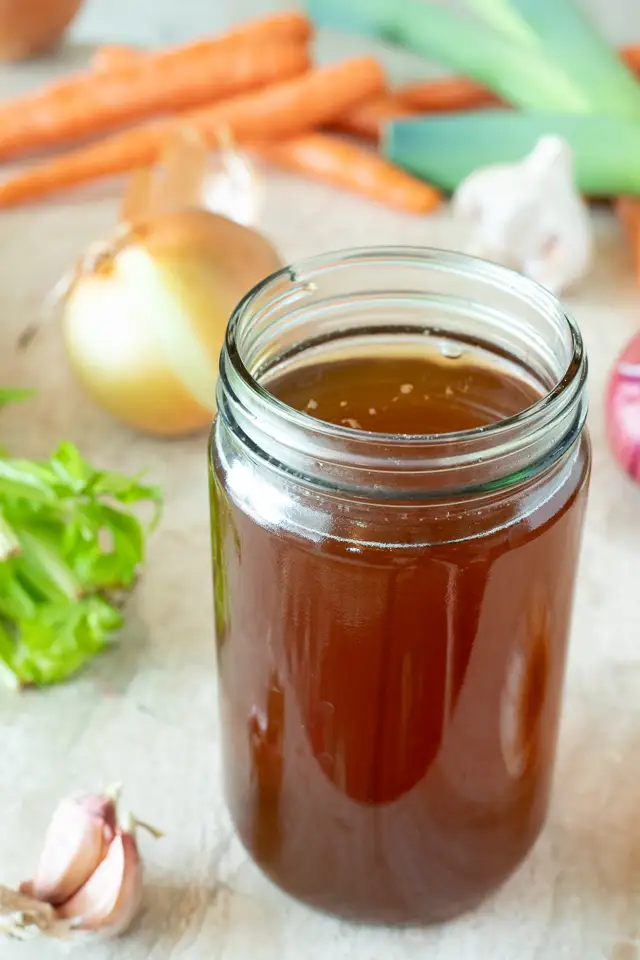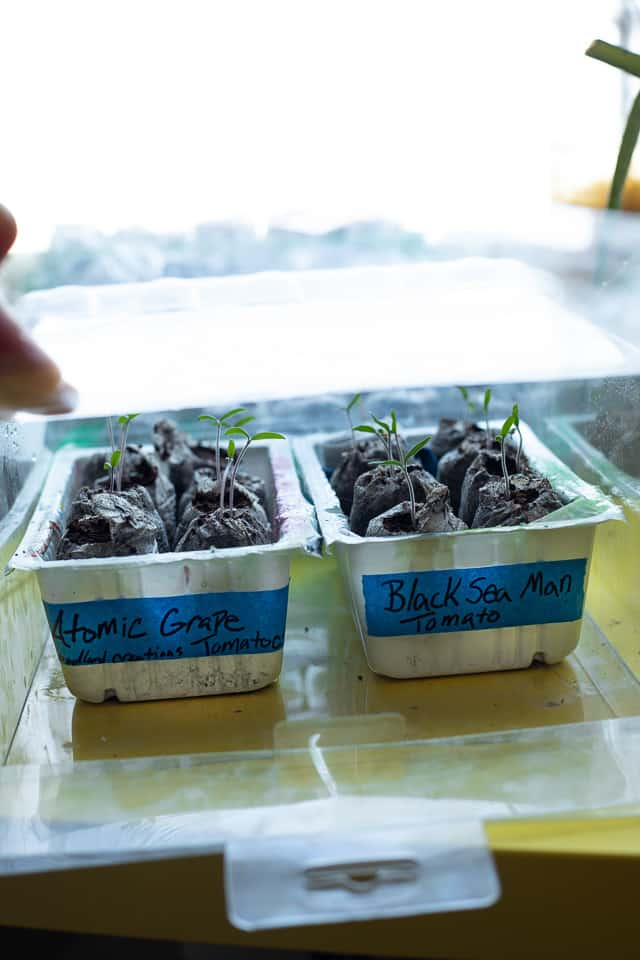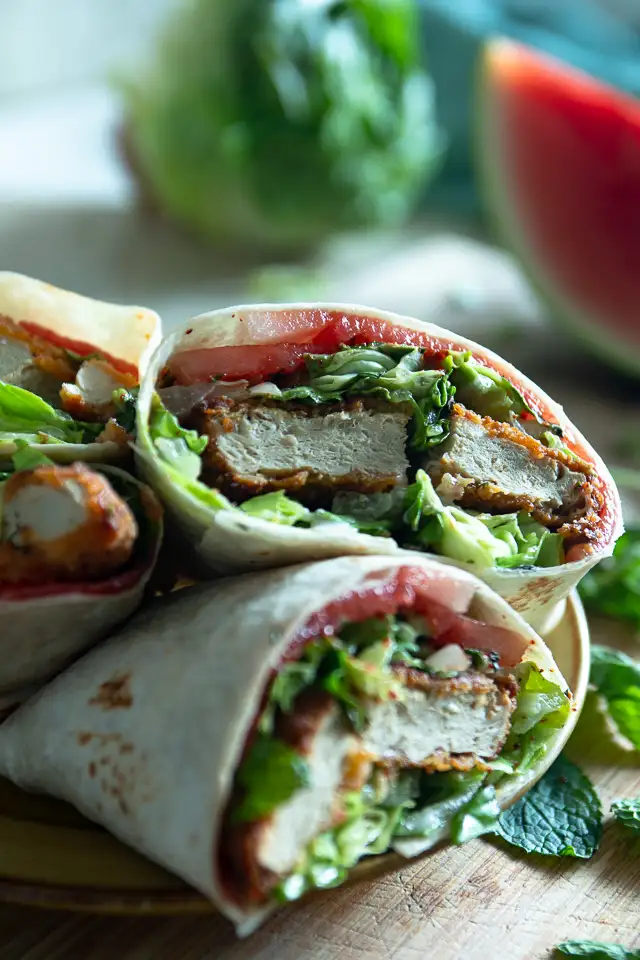Climate change isn’t slowing down- lets do our part by having a zero waste kitchen!
Here are 12 ways for an zero waste kitchen you can try now!
Curious about how to make sustainable swaps and changes in your house? It’s easier than you would think and you’ll never go back!
Think reuse, recycle, reduce!
The biggest impact an individual can make on the environment starts in the kitchen.
Our diet, how we store, toss, and clean our waste all adds up.
Have a Plant Based Diet- For the Planet!
A plant based diet is the biggest way an individual can reduce their carbon footprint.
Eating plant based has the biggest impact out of anything else you can do in your kitchen to help make our world more sustainable.
Raising and harvesting animals for consumption produces more carbon emissions than of all transportation.
Why? You need to take the years to feed them, raise them, when you could take a few weeks to grow some legumes. Those same legumes that are feed to the cows. Sure, some cows only eat grass. They still need water and land to graze on.
80% of deforestation in the Amazon is due to cattle grazing. They will clear forests and cut trees down so there is more grass for their cows to graze on.
Even that local farm in your town is harming the environment with their harvesting of animals. They also have to clear their fields of trees so their cows have more grass to eat.
Consider that a vegetarian uses about 60% less resources than a meat eating person, a completely plant based person (vegan) uses 85% less resources. Cheese and milk, the lactations from animals, are very resource consumptive compared to plant based alternatives.
You can take shorter showers, you can drive a hybrid, you can compost, recycle, use a reusable bag- but being plant based will always have the largest impact on the environment out of anything you can do individually.

That’s a huge reason why I’m vegan- and why I started this website in the first place.
I want a cleaner future, I want unpolluted water, I want clean air, I want my little niece to not have to battle the effects of climate change.
It all adds up- one meal at a time. No one is asking for perfection, but to consider the consequences of your choices.
To learn more about this scroll to the bottom of this post to see a list of articles and documentaries!
Knowledge is power– take the time to invest this rather than just taking my word.
Those documentaries and articles will blow your mind!
Be sure to check out my recipes for some plant based delights that will have you begging for more veggies!
Here are some other ways you can reduce your footprint!
Homemade Vegetable Broth- From Veggie Scraps
Most vegetable broth containers are not recyclable- they are for landfill (and our ocean). The best way to stop this waste is not buy premade broth and instead make it at home.
Luckily- it’s easy to do!
Start collecting veggie scraps for homemade veggie broth!
Give your garlic skins, onion butts, and herb stems a second life before composting them.
When chopping up onions, garlic, and herbs, save the skins, ends, and stalks in a jar that you keep in the freezer. Once you have a couple of filled jars filled with veggie scraps simply add them to a pot with water with some other veggies, let it cook, strain, and bam! You’ve got low sodium, homemade veggie broth! It’s that easy and tastes great!
Not all veggies are a good fit for your broth however, a broccoli stalk or grapefruit peel would not make a decent tasting broth! Try not to add greens to the broth- it can make the flavor funky!
Coniferous veggies like broccoli, brussels sprouts, or cabbage can make the broth taste bitter.
I’ve messed up this broth before by adding too much turmeric skins (also can make it taste bitter) so be conscious of what spices you are adding.

What to add to your veggie scrap broth jar
- Onion skins, and butts
- Garlic skins
- Herb steams
- Potato Peels
- Carrot peels, ends, and tops
- Celery ends
- Mushroom stems
- Leek ends
- Beet Scraps (Will color the broth red/orange)
- Squash and Pumpkin Guts
To make your broth do a 1:1 ratio of water to veggies, add a couple of bay leaves, a tbs miso, and salt to taste. (I like 1:1 ratio of black salt and sea salt for extra depth)
From there you can add another chopped onion, a couple of bay leaves, and some black pepper.
Cook it in an instapot on pressure for 30 minutes, then strain everything. From there I’ll compost the leftover veggies! Go to the link for the full recipe.
Compost Everything Else
For all your other vegetable scraps start compost bucket!
If you make the veggie scrap broth be sure to compost the strained veggies when it’s done cooking.
Composting is easy and anyone can do it!
Composting for Renters
You could drop off your compost at your local compost pick up (most cities offer that) or you could take your compost, dig a hole outside, and burry it- let nature do it’s thing.
You don’t need to go out and buy a kitchen compost bucket, I use a thrifted large stockpot with a lid to keep the bugs out- it works great!
There are also countertop electric composters that work fantastic. They break down the compost into a soil after a few hours which creates fantastic plant food.
Composting for Homeowners
I personally love my outdoor compost tumbler since it helps everything decompose faster than having it in the ground and it helps keep my dogs out of it. Burying your compost could potentially attract animals to the spot, however this method has been done for hundreds of years, and means you don’t have to buy anything!
Growing up my family had a compost pile where we would add our lawn clippings, veggies scraps, and ash from fires.
You would need a pitchfork (or shovel works) and mix the compost with the dirt every other day. The warmer the weather and the more you stir the compost, the faster it will decompose into rich soil.
I personally love making my own compost since it helps me save money when I garden. It really helps enrich my otherwise poor clay soil- my flowers really take off whenever I add it.
If you want to garden with your compost you do need to keep in the ratios of PH in mind. Veggie scraps are acidic where torn up newspaper, ash, and dried leaves all add carbon. A proper PH will help everything decompose faster and help create an amazing rich soil.
Get Naked… Produce
Naked produce simply means that you have a fruit or veggie that is not in a plastic bag. It is naked, it is exposed, and there is some beauty in that!
When you are buying your groceries do not put your veggies in a plastic bag, rather, wash them when you get home. They do not need to be in a plastic bag!
You can easily pick up a head of lettuce naked, but try not to buy the prechopped salad mixes since they are in plastic bags that end up in a landfill. You will also save money by skipping on the salad mixes and chop them at home.
While the plastic bags of potatoes are so convenient to load into your shopping cart consider that it takes hundreds of years for that plastic bag to break down. When it does break down, it breaks down into micro plastics that end up in our water, air, soil- and is cancer causing!
Instead try loading up individual potatoes into reusable bags, or if you forgot them at home- a paper bag.
While paper does cut down trees and isn’t the most sustainable option, it is accessible. It is much better for the environment compared to plastic since it is compostable and recyclable.
If you are a part of a CSA ask them to make it plastic free! Swapping your plastic bags for even paper bags is a small win- reusable bags, baskets, or boxes will always be the best bet.
Grow Your Pantry!

The best option for a zero waste kitchen is to grow your own food!
Use that compost you’ve been creating and create some new plant life. Replace your grass lawn with a vegetable and herb garden. Or maybe add in some fruiting vines, bushes, or trees.
Not only will you be able to enjoy the fruits of your labor, but you’ll be helping your local eco system. The squirrels, birds, and bunnies will love your edible landscape! Since they are consistently losing natural habitat from humans devolving nature areas they are beginning to live more and more in urban and suburban landscapes. The least we can do is help offer some edibles and shelter to help them survive!
I love that I can buy a packet of seeds for under five dollars and end up with more plants than I can eat. If you end up with a surplus of veggies (easy to happen with any any squash or cucumber plant), then try out food preservation. There are also options to donate your extra veggies to various food shelters.
Between canning, freezing, dehydrating, or fermenting your veggies in the fall you’ll be helping the planet by eating homegrown.
If you live in an apartment or don’t have a growing space you could always try out an indoor herb garden. Mint, sage, and basil all do great in a bright window that is full light. Regrowing chives or leeks in water is a great way to keep them alive longer and have them continue to regrow.
Shop Local- Try a CSA!
If you don’t time to learn how to grow plants (it is a skill anyone can learn if they have the time and patience to do so), the next best thing is a farmers market or CSA!
At the farmers market you can easily bring your own bag and fill it with naked, organic, local produce- that is ultra fresh. Some CSA’s do use plastic for some of their vegetables, be sure to contact your CSA to request a plastic free produce pick up!
Not sure what a CSA even is?
A CSA is a Community Sponsored Agriculture, where you are investing a share in a farm. Like a profit share, they give you a 100% of what they are able to grow each season. It won’t be a set amount because if they are able to have a great season- you get more produce! If it’s an especially dry season or if a surprise late frost kills a crop, there will be less produce to share.
It’s a fun way to help support the local community by investing in local farmers/business owners on top of being eco friendly. I love that it is an easy way to discover new small businesses in your community. Every week I pick from my CSA I’m able to discover a new Colorado brand that isn’t in stores yet. Those small batch, local products make really fun gifts. Especially for those out of state friends and family.
Be sure to be on the look for local zero waste grocery stores!
In Denver you can order zero waste groceries from Somebody People.
In Seattle there is a zero waste CSA called Salmonberry Goods.
Eat Less Packaged and
Processed Foods
Eating less processed foods is another huge way you can help the environment.
Consider that almost all processed foods you buy comes in plastic packaging.
Those vegan chicken tenders come in plastic freezer bags that will eventually turn into microplastics that pollute the Earth. That potato chip bag will sit in the landfill you send it to for generations to come. A hungry animal could confuse that candy wrapper for food. Which happens often to fish.
Which is another reason not to eat fish! When they eat plastic, then you eat them, you are ingesting that same plastic.
If everyone is able to reduce the amount of processed foods we eat, we as a society will be healthier. Consider the trash you bring to the curb, for most people, the bulk of your trash comes from food wrappers.
Imagine if you swapped potato chips for making homemade fries, or better yet, homemade chips!
Every little action, every new habit has an impact. You could save hundreds of pounds of plastic being put into landfills or the ocean by skipping on the processed foods. It’s a change that will also improve your health dramatically!
Try Buying Dried Goods in Bulk
Search out bulk bins and bring your reusable bag or jar to refill there! Prior to Covid my go to bulk bin was at Sprouts. However since the pandemic they started prebagging all their bulk items in plastic- which defeats the purpose to me.
I then discovered Azure Standard and found they have bulk grains, beans, and flour in paper bags!
They do have expensive shipping unless you do one of their pick ups. Their pick ups is where you literally meet with a group of people picking up their order off the semi truck! However the bulk prices are pretty great and it’s plastic free. Which is no easy feat to find during covid.
Try Out
Reusable and Compostable
Food Storage Methods
Another zero waste kitchen swap is using wax clothes, parchment paper, bento boxes, and glass jars.
Wax Wraps
The wax clothes are an amazing swap for plastic wrap- they last for years and are easy to clean. Use them to wrap up leftover pizza, your half sliced apple- whatever you would use plastic wrap for! They typically come in bees wax, but I’ve been able to find eco friendly vegan options here.
Try to avoid the bees wax version since the wax typically comes from honey bees- which are terrible for the environment.
It might come to a surprise to you that honey bees are bad for the environment. NPR reports they are imported from other countries and create competition for natives bees. Our native bees in the United States are in an ongoing crisis right now with colony collapse. We need these pollinators to thrive to help our ecosystem flourish.
Please support our bees and our environment by refusing to purchase honey and bees wax!
Glass Jars
My go to storage for my foods is glass jars- I simply save the glass jars that I buy other foods in.
Whenever I buy coconut oil I opt for the large glass jar since I know that the jar will be perfect for storing leftovers in. There is no need to buy plastic containers for your food- save money by reusing jars!
Purchasing mason jars is another great bet. I love them for all my fermentations, food storage, or even using as a glass for beverages.
Since I like to buy my food in bulk to reduce my plastic waste- glass jars are a lifesaver for storing all my dried goods as well.
Bento Boxes and Metal Tiffins
Bento boxes or metal tiffins are another great method for storing leftovers. Especially for odd shaped foods like sushi, lasagna, dumplings, cookies, ect. Purchasing this over plastic tuperware is a huge win for the environment. Even if you plastic container is reusable consider that it will never break down. Which is why you should consider purchasing a reusable container that is made of a sustainable material like metal, glass, or ceramic.
I love the aesthetic of ceramic bento boxes- not only is it a huge win for the environment, but it’s super cute!
Swap Out Your Sponges
Instead of continuing to purchase plastic sponges give a loofah, straw brush, or metal scrubber a try!
Plastic sponges break down into microplastics that can pollute our water and poison our environment.
Loofahs are my favorite alternative to sponges- the last for months and can be composted/ buried once they break down. The coolest part is you can grow them in your garden!
Want to learn more?
Articles to Read:
Independent: Veganism is ‘Single Biggest Way’ To Reduce Our Environmental Impact, Study Finds
University of Oxford: Veggie-Based Diets Could Save 8 million Lives by 2050 and Cut Global Warming
THE ATLANTIC: If Everyone Ate Beans Instead of Beef
OXFORD UNIVERSITY: Analysis and Valuation of the Health and Climate Change Cobenefits of Dietary Change
FORTUNE: How Your Diet Can Save the Planet
THE GUARDIAN: Eat Less Meat To Avoid Dangerous Global Warming, Scientists Say
UNIVERSITY OF MICHIGAN: CENTER FOR SUSTAINABLE SYSTEMS: Carbon Footprint Factsheet
CNN: Go Vegan, Save The Planet
CNN: How Far Will You Go to Reduce Your Beef Intake?
THE ECONOMIST: The World in 2019: The Year of the Vegan
BBC: Climate Change: Which Vegan Milk is Best?
Science Mag: Reducing Foods Environmental Impacts Through Producers and Consumers
FORBES: Everything is Ready to Make 2019 “The Year of The Vegan”. Are you?
THE ECONOMIST: How could veganism change the world?
Documentaries to Check Out:
Cowspiracy: The Sustainability Secret
Meat The Truth
An Inconvenient Truth
- Pumpkin Gnocchi Soup
- Vegan Labneh
- Miso Eggplant in the Air Fryer
- Stuffed Mini Jack o Lanterns
- Miso Mushroom Gravy
Air Fryer Recipes Baking Recipes Bread Recipes Breakfast Cakes Candy Recipes Chanterelle Recipes Chicken of the Woods Recipes Comfort Food Recipes Dip Recipes Drink Recipe Eco Friendly Lifestyle Fall Recipes Fried Recipes Gluten Free Recipes High Protein Recipes Instant Pot Recipes Late Summer Recipes Lobster Mushroom Recipes Maitake Recipes Morel Recipes Muffins Recipe Mushroom Recipes Nut Free Oyster Mushroom Recipes Pasta Recipe Pizza Recipe Plant Based Seafood Recipes Sandwich Recipes Seitan sides snacks Soul Food Soup sourdough Soy Free Recipes Spring Recipes Stove Top Recipe Summer Recipe Sweet Recipe Tea Recipe Thanksgiving Vegan Cheese Vegan Recipes Winter Recipe
